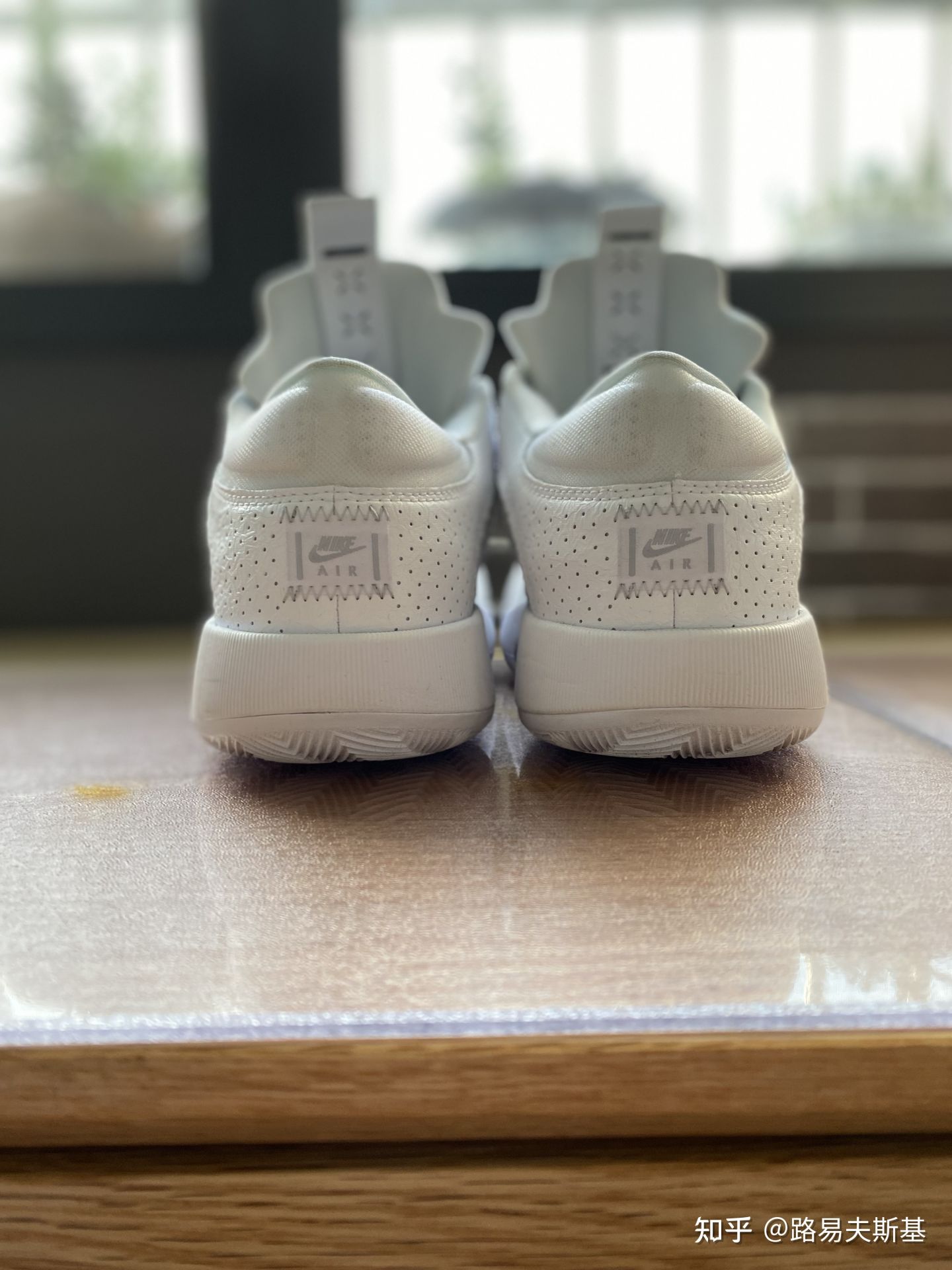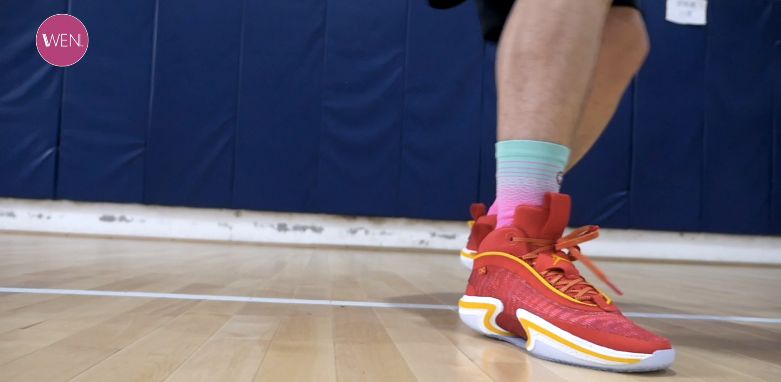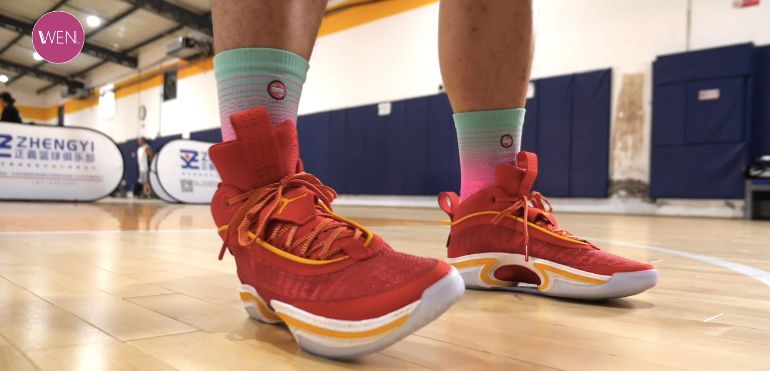By far there are lots of excellent products in the AIR JORDAN series and from my point of view, the AIR JORDAN 20 is the best of the series that Nike has presented to its fans. In fact, the AIR JORDAN 20 is more than just a pair of basketball shoes. It’s also a piece of art as well as a database of all the JORDAN’s glory in the past.
So with great tribute for it, I bought the sneaker 2 months ago and right now I’ve got some knowledge of it. Hence presenting to you my AIR JORDAN 20 performance review which I hope may do some help for you when you are making decisions.
Let’s get started.
Fit and comfort
True to size or should you deviate from your usual choice? How comfy are these? Initially I did have concerns about the sizing problem, thinking that the wide last might not suit very well my relatively thin
Inside the shoe there’s the so-called one-bootie design, making the footbed not so wide as it looks. But could it be a bother for wide footers? Well, hardly the scenario! Because of the wide design of the shoe, it is more than suitable even for wearers with super wide feet. Simply put, the shoe is made to suit the great masses rather than the minority. So you can still find the right size for your feet even if you think you’ve got special foot type.
In a word, they look as well as feel very snug and compact. For those regular/narrow footers, going true to size will be fine and they can still expect a snug, near one-to-one fit. As for wide footers, going up half a size should be better, but how good or suitable it can be depends on how wide your feet are of course.
Over and above that, the eye-catching wide strip on the vamp is thought by some for improving wrapping, but surprisingly, it is less effective in practice. For the ankle straps, they make me feel uncomfortable and though I can leave them loose during daily wearings, they are a big bane for me when I am exercising. So I don’t actually like the setup.
Cushion
The working principle of I.P.S. seems to be similar to that of SHOX. Inside the midsole of AJ20, there are 20 elastic columns embedded which are placed according to ergonomic principles. Sounds quite novel and a lot of people would even think it as a brilliant new tech.
For all that, its performance on court is what really matters. During my plays, the feelings offered to me by the I.P.S. was the kind between Zoom-Air and air-sole. And since I am not heavy, I feel very comfortable in it both during jumping and landing.
Unlike other cushion setups, there’s no need for me to take a couple of sessions to really feel the I.P.S.’s full potential. It seems things just get awesome at the very beginning. In short, this is a super well-balanced setup that are fantastic for just about anyone.
Thanks to the generous energy return from the setup, I can also enjoy the stellar impact protection and absorption. And since the forefoot area is lower to the ground, I think it would be very agreeable for players who seek to improve their pace on courts.

Protection
In the AJ20, JORDAN BRAND has used a technology called Ankle Strap, which is one of the distinctive features of the AJ20, but also a hassle in practice. At the beginning, I tied the strap directly to the ankle, which made me feel very uncomfortable and seemed to have no protection at all. But later, I learned the correct way to use the strap through the instructions on the shoe box and things improved a lot then.
The strap is connected to the body by a small sticky clasp on the tongue. After doing so, I could obviously feel the security offered by the shoes, though it has yet to be ideal. But it’s a bit frustrating that even when I’ve got it right, I still have to struggle to put on the shoes , and it takes several adjustments to get the straps in the right place. Besides, the straps also chafed the ankle a little bit during the initial wearings, but with longer socks I can easily get rid of the problem
While the I.P.S system itself provides good torsion resistance and support, the AJ20 has also a carbon plate in the midsole to enhance its torsion resistance, according to the detailed information on the shoe box.
As for the outsole, it feels good and its infield performance is very nice at the meantime, which actually surprises me a great deal. Nevertheless, it would be a bit unbearable to play in it on the outfield because you’ll find it wear away easily.
Court feel
The midsole of the shoe is thin, and the insole is right on top of the I.P.S system, so this gives me a nice sense of court. But compared with the zoom-air, the cushion system of this one feels a bit slower during forefoot startup, which may be attributed to I.P.S.’s similar working principle to that of SHOX and its being made too soft.
Traction
Based on my experience, I can ensure you that the grip of the AIR JORDAN 20 is very good. I usually play on indoor courts and even if the wooden floor is dirty, I don’t worry about grip at all.
Before I put on the shoes, I noticed that the AIR JORDAN 20 has 10 protruding dots on each outsole. When I wear the AIR JORDAN 20, I feel that both feet are stepping on these 10 dots, rather than the whole outsole. The floor was dirty that day, but that causes no barrier to the grip provided by the AIR JORDAN 20, and therefore I am able to stop wherever I wanted.
Weight
The AIR JORDAN 20 is actually lightweight despite the chunky appearance. Although the thick outsole makes it look clunky, the AIR JORDAN 20 is fairly light and if you ever get a chance to play in it, you’ll know clearly what I am talking about.
Overall:
Two months are definitely not enough to get full knowledge of a sneaker. So more information and try-on would be best for you if you are right now considering buying the shoes.
To sum up, this review, hopefully, can be of some avail for you. As I mentioned earlier, the sneaker is not only a pair of sneaker, but also a work of art and a database of JORDAN’s past glory days. So, depending on what you want from it, be it the shoes’ commemorative property or their performances, you may decide whether it is your thing.




















